Europe's online source of news, data & analysis for professionals involved in packaged media and new delivery technologies
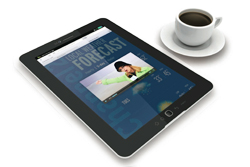
Accenture research: Online TV access - preference for Connected TV subsiding
Consumers' video consumption habits are maturing and becoming more sophisticated, Accenture's third annual Video-Over-Internet Consumer Survey reveals. Online viewership is both high and consistent relative to 2012. Overall, 90% of consumers globally now watch video content over the Internet, including movies, TV programmes, videos-on-demand and more on some device.
Consumers are using all available connected devices for video viewing, from the PC to TV, phone and tablet. The PC/laptop has very high penetration with 89% of consumers watching video content on their PC or laptop compared to 81% in 2012. It remains the most used device for watching video content over the Internet.
In particular, the Accenture research shows that watching online video on a tablet is growing dramatically. In 2013 a third of consumers are watching online videos on a tablet compared to just a fifth (21%) in 2012. It is showing strong use across all types of video content watching. The frequency with which consumers are watching video content over the Internet is also increasing.
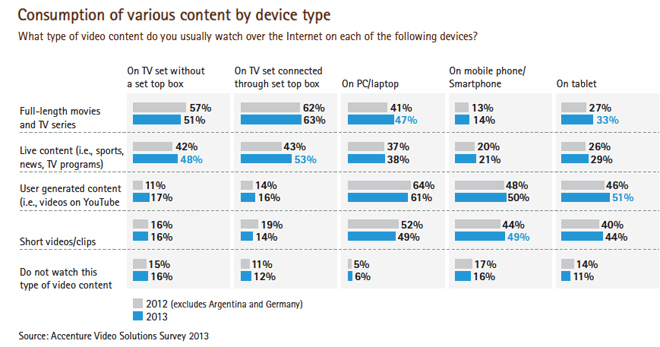
The most significant growth is evident in high frequency categories: those watching videos daily or three to five times per week. More than one quarter of consumers watch video content over the Internet on a PC every day and another 22% do so at least 3 times per week.
Those watching on connected TV every day jumped from 21% to 30% in one year, and mobile phone video watching frequency increased from 7% watching daily to 12%.
But consumers remain confused about how to best access online video on TV. Connected TV remains the ideal method for accessing online video on TV. However, preference for using connected TV for online videos has slipped from 36% in 2012 to 31% in 2013. Furthermore, the percentage of consumers who are not sure or don?t know their preferred method for accessing online video on TV has risen from 23% to 28%.
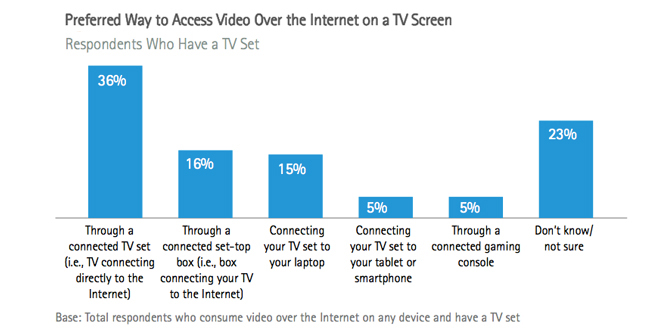
Intuitively, says Accenture, one would expect consumers to prefer to watch online video on a TV with direct Internet connection that eliminates the need for a set-top box. Instead, preference for connected TV is decreasing as more consumers just 'don't know' their ideal method. Despite efforts by manufacturers to evangelize the benefits of connected TV this has not reduced consumer confusion in the past 12 months.
In consumers' quest for simplicity, installation could also remain a barrier. Consumers find the installation aspect of accessing video content over the Internet to be easiest on PCs, tablets and mobile phones - 19% say technical installation and maintenance to access video content over the Internet is very easy on a connected TV versus 31% on the PC/laptop.
Finally, it is reasonable to consider that while some consumers would like to see the set-top box go away, features such as DVR and innovations around the next-generation set-top box as the home entertainment platform, as well as innovative services, such as the UK's YouView, are providing new interests in set-top box adoption.
In addition to access issues, consumers indicate other frustrations with watching videos online. Top concerns include video quality, stream download and advertising. While quality counts, consumers raised a number of frustrations when watching video over Internet: advertising during the programme, download time and picture quality. These concerns are consistent across all countries, similar to Accenture's 2012 findings.
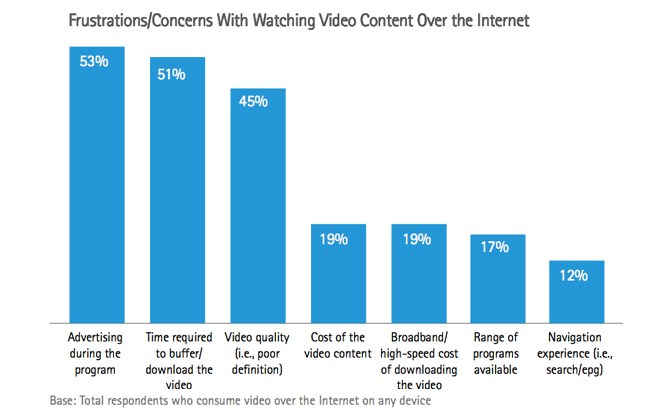
In a video world many thought would be dominated by emerging players by now, Accenture's research reveals that broadcasters have gained consumer trust, showing they are reaping the benefits of their investments
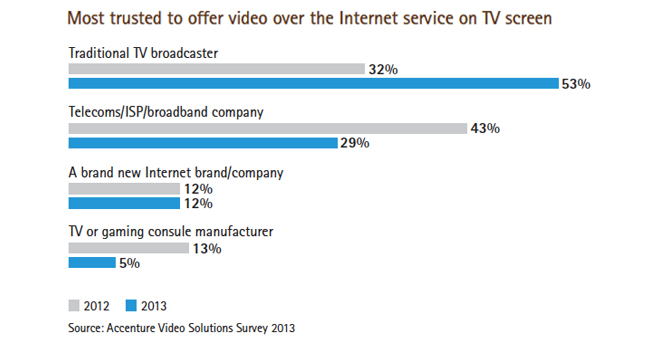
Story filed 15.04.13




















